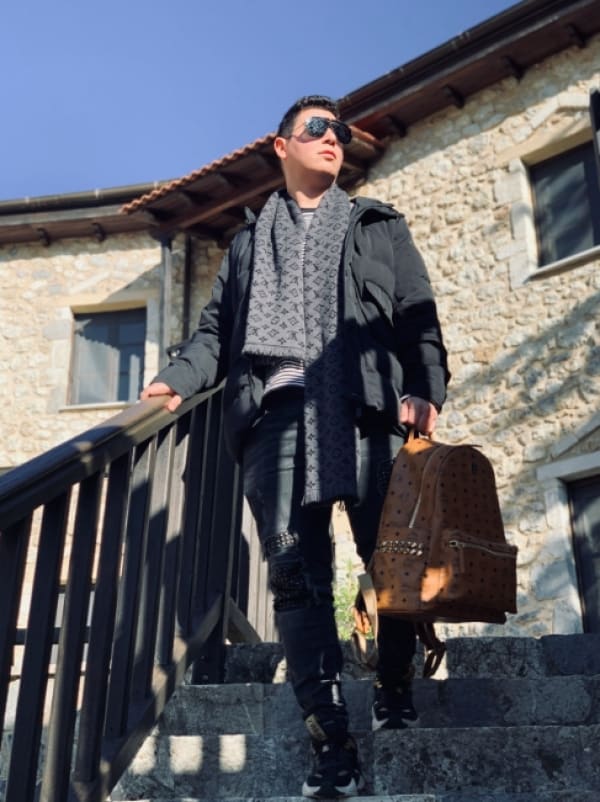Every little detail is characterised by supreme luxury which embraces the senses and creates a fine atmosphere for long or short escapes.
In the heart of Stemnitsa, you have many reasons to choose Trikolonion Country Hotel for your accomodation. Τhe distinctive décor surrounds each corner of the hotel and can take you virtually a trip to previous times. Solid wood, stone, engravings of Kamarinos and specific color combinations, impress the visitor. Original lithographs and engravings of great artists, such as Tsarouchis, Fasianos, Mitaras, Moralis, Galtemis and Pantelias greet and welcome you in a unique environment in the region of mountainous Arcadia.
The absolute harmony of traditional architecture with the beauty and the nobility of the settlement, add to Trikolonion original charm beyond expectation.The 14 luxurious rooms and the four suites are sure to impress you from the first moment as they will certainly appeal to your senses with their simple and cosy style.
You will have the chance to to experience the unparalleled natural beauty of Arcadia, to live in Stemnitsa, a traditional settlement with ancient trees and stone paths, and enjoy the stately, rustic hospitality that Trikolonion Country Hotel will offer you generously!
STEMNITSA
Stemnitsa will definitely make your heart beat faster! Everything seems to blend with nature most wonderfully, without the slightest sound of cacophony.
Greece is full of wonderful little villages that are within a few hours drive away from Athens. I would highly suggest Stemnitsa and Trikolonion Country Club for a mountain getaway.
It’s a place to go and truly enjoy the natural surroundings. You won’t have to stress and deal with modern day problems! Tradition plays an important role in Greek mainland, including Stemnitsa village. It is perfectly understandable why locals have fought hard to maintain tradition and revive customs from old times.
The beauty of Stemnitsa just catches your breath as it seems to hover over these steep hillsides next to the canyon. Declared as a historic preservation settlement since 1985, it is an entire attraction for its natural beauty and location but mainly for its traditional architecture, its stone mansions, views of the canyon, its picturesque cobbled streets, its old churches and its traditional shops.
Stemnitsa is a striking village of stone houses and Byzantine churches. If you want to peek into any of the churches, ask around for the keys. There are several monasteries in the area, in the Lousios Gorge along the riverbank to/from the site of Ancient Gortys. Stemnitsa is also known for its silver and gold craftsmanship; even today, there is a silversmith school here.
History:
During the Turkish domination, Stemnitsa evolved into a major hub for metallurgy and its -mostly itinerant- craftsmen (goldsmiths, silversmiths, blacksmiths, bell and cowbell manufacturers, coppersmiths, etc.) created exceptional works of art, even beyond the borders of Arcadia. In the vicinity of Stemnitsa there are at least 20 Late Byzantine churches of truly stunning architecture and style, as well as the monasteries of Philosophou, St. John the Baptist, Aimyalon and Kalamiou Atsiholou; all major hubs of asceticism and rich Christian Orthodox tradition. Stemnitsa, which used to be called Ypsous, was probably founded in the 12th century and during Byzantine times it was famous for the production of bells. During the Ottoman rule it developed into an important metal-working centre and its craftsmen (goldsmiths, silversmiths, blacksmiths, bell makers, tinkers etc.) created works of excellent art even beyond the borders of Arcadia. This long tradition is continued today by the Silver-Gold-Smithery School.
What to visit:
St. George church in the village’s square with part of illustrations painted from Kontoglou, Zoodoho Pigi the monastery where the 1st conclave of Peloponnese took place, Panagia the Mpafero and the Iroo, where you can admire sunset, Agious Anargirous or Three Hierarchs small chapel built in 1715, next to Stemnitsa’s Silver and Goldsmith School. At the school, you can meet the students and admire their crafts.
The last few years, every spring, silversmiths are gathering together in order to save and to spread their techniques (source: Stemnitsa’s Silver and Goldsmith School). In Stemnitsa’s Folk Museum, housed in two renovated buildings, learn about the old crafts through the representation of traditional workshops, see the interior of an old stemnitsian house, the collections of Byzantine icons, metalwork, pottery, woodwork, embroidery, costumes, ecclesiastical objects and shadow theater figures crafted by the last Stemnitsian puppeteer Lambros Karadimas.Â
Where to stay:
19th-century stone-built structures were merged to construct the Trikolonion Country Club-in the centre of Stemnitsa village- which narrates a hospitality hi-story dated back from 1864. Our suite was very clean and had a warm mountain house vibe. Thick carpets, velvet curtains, and the spectacular view from the private balcony offered us the warmth we needed. Trikolonion Country Hotel is the coalescence of 4 impressive towers and stands for the combination of wood and stone unique aesthetics. Every little detail is characterised by supreme luxury which embraces the senses and creates a fine atmosphere for long or short escapes. The distinctive decor surrounds each corner of the hotel and can take you virtually a trip to previous times. Solid wood, stone, engravings of Kamarinos and specific color combinations impress the visitor. Original lithographs and engravings of great artists, such as Tsarouchis, Fasianos, Mitaras, Moralis, Galtemis and Pantelias greet and welcome you in a unique environment in the region of mountainous Arcadia.

